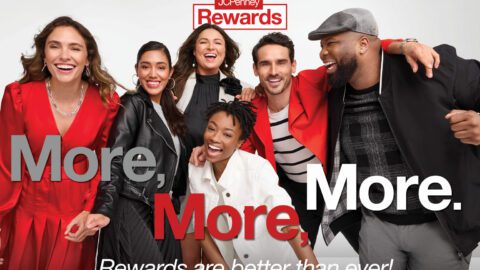Some retail and consumer brands now have more than one million “fans” and “followers” via social networks such as Facebook and Twitter. These numbers don’t always add up to active purchasers, however. Which is leading many brands to look for tools and tactics to integrate their loyalty programs with their social media communities.
Borrowing a page from the store-based loyalty card programs, some of the social CRM strategies are adopting points-based points platforms. For example, social technology and media company ViewPoints recently added a Social Loyalty Engine to its technology platform.
The engine is designed to help brands establish a reputation and rewards program to motivate customers to contribute content and become leaders and brand advocates in the brand’s online community and across the social Web.
Advertisement
Sears Holdings, Corp. is leveraging the ViewPoints Social Loyalty Engine, by creating customer communities for its Sears and K-Mart brands with a point-based approach to give customers something to socialize about. For its MySears and MyKmart communities, the retailers use incentives to drive review writing and other forms of activity, with each earning a “status” of “ViP,” “Advisor,” “Writer,” “Reviewer,” or “Contributor.” Community members can also earn points for basic actions like becoming a member, uploading a profile photo, or posting a forum discussion.
Taking a different approach from traditional loyalty programs that reward consumers on the number or size of their purchases, the Viewpoints Social Loyalty Engine recognizes the value of consumers’ overall engagement, through their reviews, discussions, comments and blog posts. The Social Loyalty Engine measure’s a consumer’s overall impact on a brand’s image through the positive word of mouth recommendations they generate.
The engine works through a customizable points system designed to motivate and reward consumers to contribute reviews, answer questions, participate in discussions, vote on or share content across the social web. Members accumulate points, or other forms of currency, so they can reach and maintain various reputation levels and earn badges that signify special status in the community (see Sears example).
These badges are prominently displayed on the member’s profile and in their reviews. Companies are able to determine how the program and badges are branded, which activities will trigger points and how many points a consumer needs to reach specific reputation levels. In addition, they can offer consumers incentives such as coupons and gift certificates for achieving certain levels.
Another peer-based online marketing platform launched in beta last September is Peer Squared (Peer2). The company’s client roster includes apparel companies Miss Sixty and Energie, motorcycle brand Ducati, nutritional product maker SuperFoodsRx and performance skin care product Brave Soldier.
The Peer2 program is designed to allow consumers to share branded content across 20 social media sites, including Facebook, My Space, Hi5, StumbleUpon and Reddit. Every time a consumer clicks on the branded content on one of those sites, the person who shared it receives points, which he or she can redeem for products like electronics, jewelry, music and toys.

CROSS CHANNEL CRM
Sears and Kmart are alone in shifting their loyalty efforts into the social mediasphere. There is a growing roster of retail, hospitality and consumer products brands building their CRM strategies across channels. For example:
Tasti D-Lite, the lower-calorie frozen dessert chain with a strong following among health-conscious consumers, recently announced the roll-out of its ground-breaking, new TastiRewards loyalty program. Members of the loyalty program are not only rewarded for their purchases, they can also earn points toward free Tasti for spreading the word on social networks such as Twitter and Foursquare. The company claims the program is the first social-media enabled restaurant rewards program allowing members to opt-in and enable their account to automatically send messages via Twitter and Foursquare when points are earned or redeemed.
Victoria’s Secret has tapped its strong social following to drive in-store sales. The retailers’ Pink brand has more than 900,000 “fans” on its Facebook page, all of whom are plugged into the tools VS uses to cultivate brand identity and strengthen relevance. In July 2009, the Pink community members were invited to “Pinkapalooza,” a Los Angeles event that celebrated the launch of Pink’s back to school Collegiate Collection. The downloadable invite allowed fans to participate in online games and contests via their mobile phones while at the event. Afterward, the Pink brand sent mobile participants an m-coupon for in-store specials.
Estee Lauder sought to reach socially active consumers to bridge the gap between online and offline advertising. A recent The social media promotion offered women a makeover at Estee Lauder counters in department stores like Bloomingdales, Macy’s and Saks. After their makeovers, consumers can have pictures taken and uploaded directly onto their Facebook page to share with their own personal communities.









